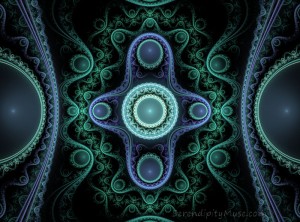I must admit: I LOVE my computer! In fact, I love having access to lots of electronic gadgets. When I think back to the past, and the hardware and physical space needed to store and listen to/create with/watch/read various media, I am so thankful to be living in the 21st century. And having all this media streaming through my desktop can be so inspiring! One of the benefits of having software available to help me with my creative expression is the fact that I can “undo” most of my mistakes, so I can make my final product even better than it might have been before. Then I think back to all the Masters of various art forms and marvel at their talent and skill, which then makes me doubt my own abilities. If Leonardo DaVinci had had Photoshop and Word available back in the day, what might he have accomplished? And if 3D printers had been available? The possibilities are mind-boggling.
Even so, I try not to put myself down too much. I realize that there are those who claim to not be able to draw a stick figure well (Spousal Unit says that he “can’t draw anything but flies”), and I feel blessed that I have all this help in bringing my visions to reality (or virtual reality, as the case may be). If I want to learn a new technique, there are books (both paper and pixel), blogs, videos and other forms of instruction all available 24 hours a day, 7 days a week, for whenever I want to sit down and learn. And when I share what I’ve learned or made, I might inspire somebody someday to create something wonderful themselves.
One of the artistic philosophical questions of our time is this: At what point does our work stop being “our” work, and start being “the computer’s work”? For example, if I use Apophysis to create a fractal image, and just set it to automatically generate fractals, even a specific kind of fractal, or apply a script (written by someone else) to a random fractal to make a certain kind of image, is it really “my” art that I produce? Likewise, if I use a 3D program, like Poser, Bryce, Blender or Terragen, to render an image, how much of that work is “mine” and how much credit does the computer get? If I download someone else’s model, texture, lights, set or setup, then render it on my computer, how can I claim the image as mine? How much (and what) must I change to claim the work as my own? The lighting? A character’s pose? The set elements? I don’t really have the answers to these questions. Still, I tend to ask them a lot. Copyright is very important to me, and should be important to every creative who hopes to one day sell or display their work in any sort of public forum. I don’t rip off other peoples’ images and try to pass them off as my own, and I sure hope nobody tries to do that to my work.
Sometimes I am inspired by something I’ve seen, heard, read or experienced to try to make my own version of a piece. Once in a while, I succeed. On very rare occasions, I produce something I like better than the original. Most of the time, however, the original piece far exceeds my ability to replicate it. So I just sit back and enjoy the memory of the original, and savor the lessons learned.
Often, while I am learning a new technique (or relearning one), I follow someone’s tutorial or “recipe” (ex: settings to use to get a specific result), and get something very close to the original image. That’s exactly what happened with this image:

This is why I love Apophysis so much, and one of several reasons I decided to go back to a Windows machine (Apophysis is only available for Windows). I love these designs! They are so ornate and complex. The possibilities are literally endless. I’m having a blast relearning this program. Thankfully, there are lots of tutorials out there, with Claire Jones‘ tuts being among the best. This one is called a “Grand Julian”, and is characterized by circular motifs and curving lines repeating over and over, with a bilateral mirrored layout. I’m looking forward to learning and playing some more.
While I don’t claim any ownership over the image above, it was fun to learn the technique, so I can play with the settings and create something of my own. It’s like cooking: it’s one thing to follow someone else’s recipe, but only once you understand the chemistry behind food preparation and cooking will you be able to consistently create tasty new recipes on your own.
So, I’ll try to spend some time playing in the sandbox and see what else I can figure out. Take care, all! Enjoy and create!